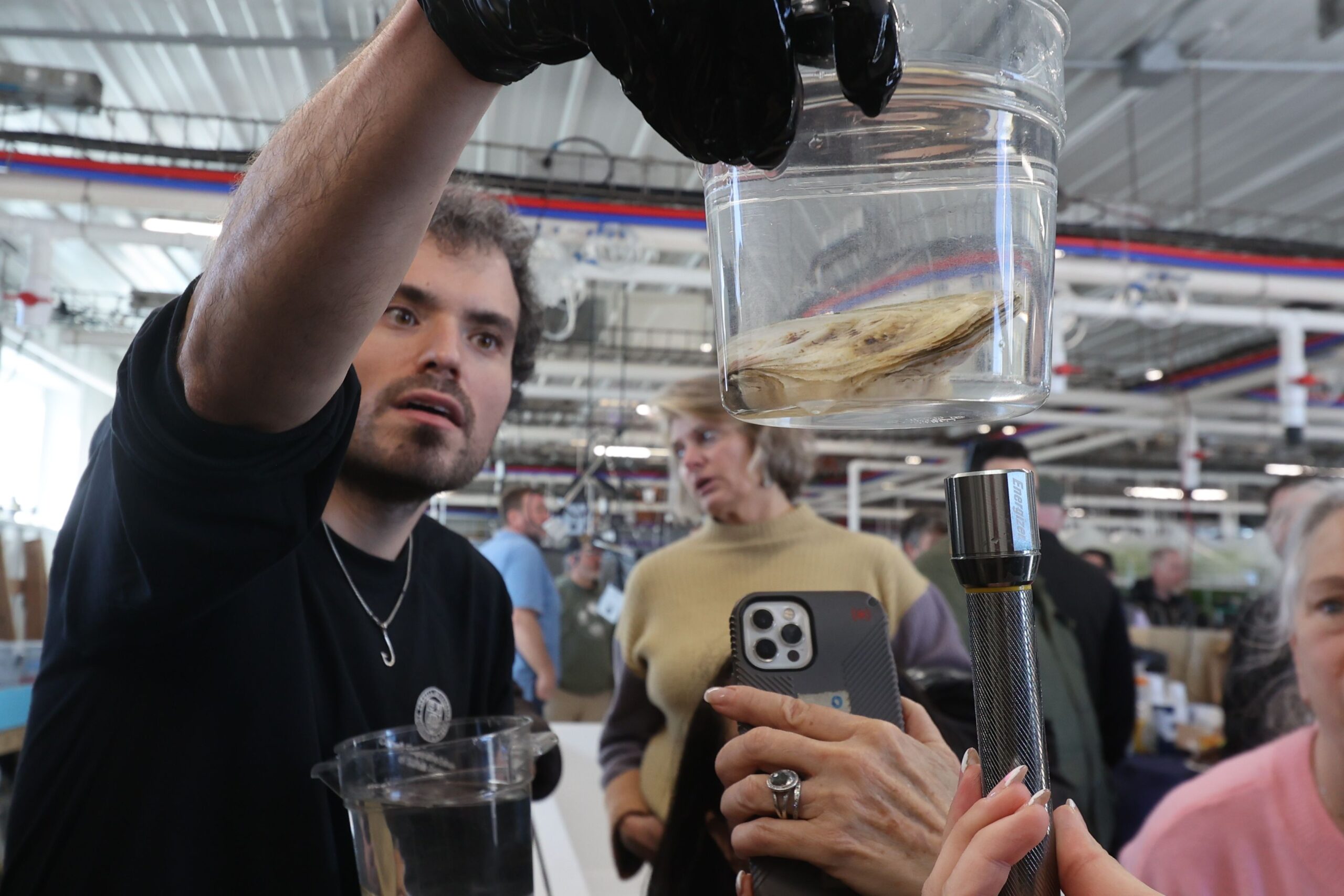It’s officially shellfish restoration season for the Cornell Cooperative Extension of Suffolk County (CCE Suffolk) Aquaculture Program.
The organization kicks off the season each year with an oyster spawn on Feb. 14 in Southold at the Suffolk County Marine Environmental Learning Center (SCMELC), with an eye toward boosting the economy and the environment.
“The shellfish industry is an important part of the Long Island economy, and past experience has proven that aquaculture research plays a significant role in supporting the industry,” Vanessa Lockel, executive director of CCE Suffolk said in a written statement.
“Cornell Cooperative Extension takes pride in the work of our dedicated team of scientists for their commitment to this important aspect of the ecology of Long Island,” Lockel said.
Scientists at CCE Suffolk have been producing shellfish at SCMELC for planting in local waters, for more than 30 years, and seeing results. In 2018, for instance, a nearly 4,000 square foot production hatchery was added to the site, and since 2021, more than 125 million shellfish produced including oysters, bay scallops and hard clams.
Long Island’s shellfish industry accounts for an estimated $30 million dollars annually in the region, according to the Long Island Oyster Growers Association. This is an industry that is filled with challenges, including competition from other regions. Still experts say it’s an industry in which investment could bring meaninful change, both economically and environmentally.
In May 2023, for instance, a study conducted by the HR&A, a New York-based economic development advisory firm, found that Long Island would benefit through intensified investment in its “blue economy” sectors. Commissioned by Newsday’s nextLI initiative, the study identified those sectors as aquaculture, marine research, marine construction, maritime transportation, offshore wind, and tourism and recreation.
According to the study, those sectors in 2021 sustained 67,700 regional jobs, but the number of jobs could grow to as many as 127,800 by 2051. The study also found that, by that year, the sectors could potentially deliver $41 billion in economic output and more than $2.6 billion in tax revenue.
Back in the early 1990s, a shellfish hatchery was established at SCMELC to support reseeding efforts in local towns including Southold, Southampton and Shelter Island. CCE Suffolk has partnered with these towns ever since o seed clams, oysters, and scallops in local waters. They aim to improve water quality and help support recreational and commercial shellfishing.
At the kickoff event, held each year on Valentine’s Day, attendees explore CCE Suffolk’s production hatchery. Here, in a small tank were several dozen adult oysters, conditioned for spawning over many weeks. On Wednesday, hundreds of thousands of larvae – young oysters – were produced and will be grown in the hatchery until large enough to be released.
This year, CCE Suffolk also focused on bay scallops and recent advances in the field of kelp aquaculture.
“I am especially excited to give visitors a chance to get up close and personal with the process of how we spawn shellfish in our hatchery. It truly is an amazing experience that is nothing short of miraculous the first time you witness it.” Chris Pickerell, director of the Marine Program at CCE Suffolk, said in a statement.
“While this is something we do every year and numerous times throughout the year, I believe it is important for our stakeholders to have a better understanding how much work and training goes into making this possible,” Pickerell added.
“Shellfishing and the aquaculture community are not just an industry; they are woven into the very fabric of life on the North Fork, enriching our history and, to a noteworthy degree, shaping our future,” Town of Southold Supervisor Al Krupski said in a written statement.
“The location and function of the lab highlight the importance of maintaining water quality efforts,” Krupsci added. “We are honored and proud to host CCE Suffolk’s shellfish hatchery, a vital contributor to our community’s sustainability and economic well-being.”
Jessica Henesy, economic development specialist with the New York State Department of Agriculture and Markets, said in a written statement that SCMELC provides an excellent illustration of the ways that research can be leveraged to help build regional economies.Their specialized expertise in shellfish science benefits all of Long Island, both in economic terms and helping to sustain a treasured way of life for the region.”
CCE Suffolk also offers a community-based program that offers families and individuals a chance to get involved with raising oysters.
Image and article originally from libn.com. Read the original article here.

